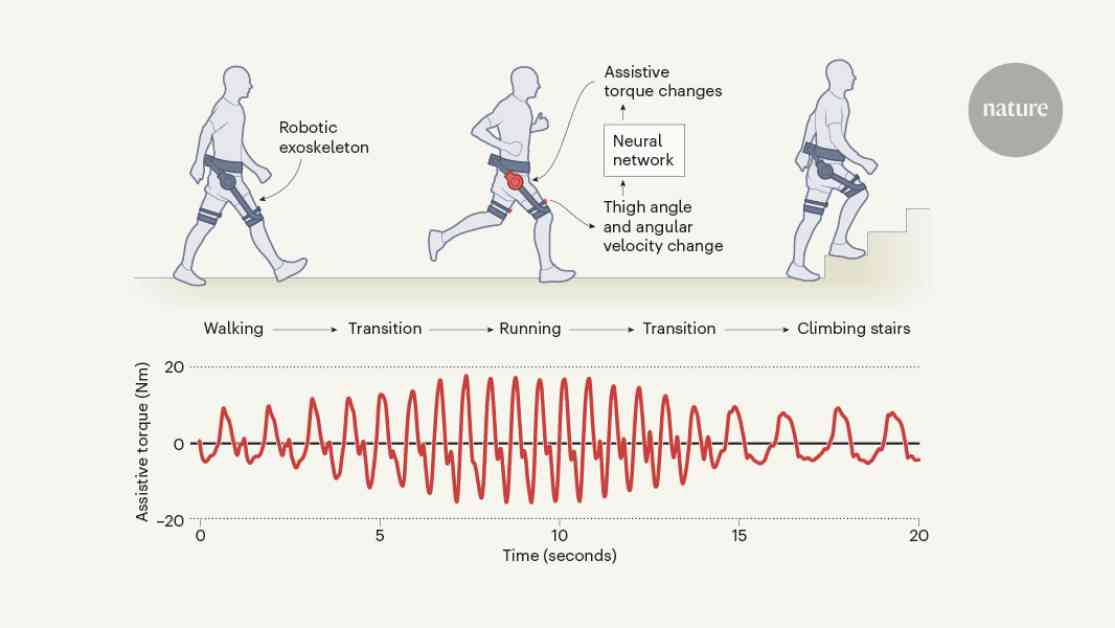Robotic Exoskeleton Adapts to Its Wearer Through Simulated Training
A new approach to training robotic exoskeletons is revolutionizing the way these devices interact with users. This innovative method, as detailed by Luo et al. in a recent Nature publication, focuses on simulating human-device interactions to create versatile and adaptable exoskeletons without the need for extensive user data. This breakthrough could significantly improve the user experience for individuals with motor disabilities or those seeking assistance with daily activities.
Traditional robotic exoskeletons are often designed for specific tasks, such as walking or running, and require customization for each wearer. This can be time-consuming and inefficient. However, the simulation-based approach proposed by Luo et al. eliminates the need for extensive user input, making the devices more versatile and easier to adapt for different individuals. By integrating this technology into everyday life, robotic exoskeletons could become more accessible and user-friendly.
The key to this new training strategy lies in its ability to simulate human movement and interactions with the exoskeleton. By understanding how users are likely to move and respond to the device, the technology can provide more effective assistance across a variety of tasks. This paves the way for a future where robotic exoskeletons seamlessly integrate into daily routines, offering enhanced mobility and support for users.
Researchers like Sawicki et al., Baud et al., and Siviy et al. have made significant contributions to the field of robotic exoskeletons, showcasing the potential for these devices to improve quality of life for individuals with motor impairments. By leveraging simulation-based training, the latest advancements in exoskeleton technology are pushing boundaries and opening up new possibilities for users.
In conclusion, the development of adaptive robotic exoskeleton training technology represents a significant step forward in the field of wearable devices. By focusing on simulation-based training, researchers are streamlining the customization process and creating more versatile exoskeletons that can benefit a wide range of users. As this technology continues to evolve, we can expect to see more innovations that enhance mobility and independence for individuals with motor disabilities.

